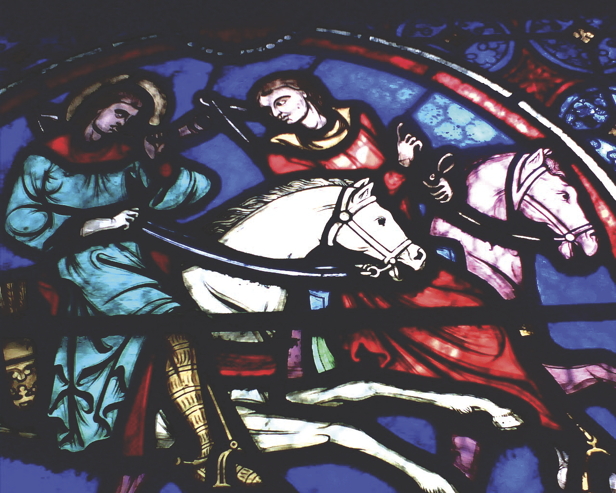We know precisely how medieval coloured (‘stained’) glass was made, as in around 1125 a German monk named Theophilus wrote a Latin treatise called ‘On Diverse Arts’ in which the process of coloured glass manufacture was detailed. The essential material for glass manufacture was river sand (silica). Requiring a very high temperature to become molten, potash was added to allow the silica to melt. Other substances (lime) were then added to make the glass more stable. Glass was coloured by adding metallic oxides while it was in a molten state. Copper produced green, cobalt made blue and gold produced red or ruby glass. Glass coloured while in the clay pot in the furnace is known as ‘pot metal’ glass. Details of faces, hair and hands were painted onto the inner surface of the glass with special glass paint, made from finely ground lead or copper filings and ground glass, suspended in a medium such as wine or (traditionally) urine.
How was stained glass made?

